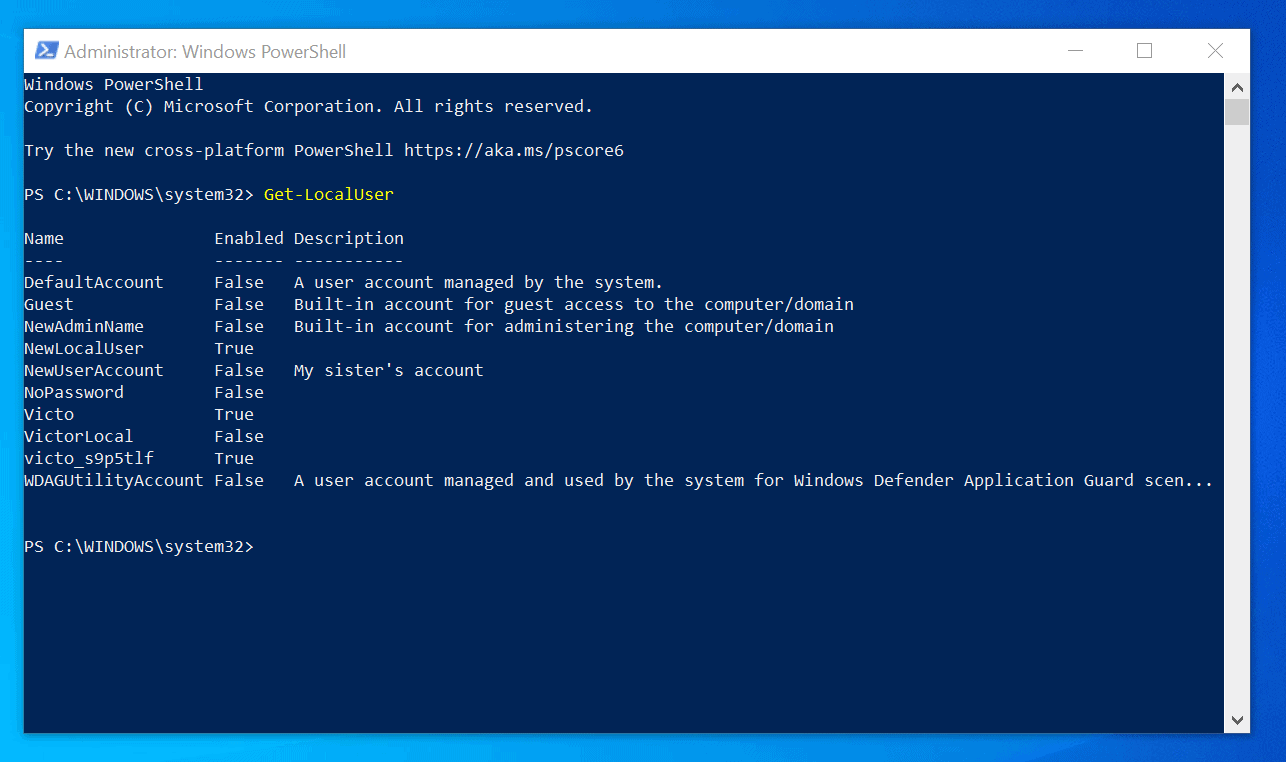
- #Windows powershell admin windows 10
- #Windows powershell admin password
- #Windows powershell admin Pc
- #Windows powershell admin Offline
Shut Down or Sign Out: (First, press U, and then press i to Sign Out, S to Sleep, U to Shut Down, or R to Restart).Run (R): Opens Run, a feature that lets you open folders and run programs with commands.Search (S): Opens Windows Search and places the cursor in the Search bar.File Explorer (E): Opens File Explorer.Settings (N): Opens the Windows Settings app.Task Manager (T): Opens Task Manager, which displays resource usage and process statistics.Windows PowerShell Admin (A): Launches PowerShell as an admin.

#Windows powershell admin Pc
Device Manager (M): Opens Device Manager, which lets you configure and/or troubleshoot your PC hardware.System (Y): Shows the system information of your machine in the Settings app.Event Viewer (V): Opens Event Viewer, which shows a log of app and system messages.Power Options (O): Opens Power & Sleep in the Settings app.Mobility Center (B): Opens Windows Mobility Center, a place in which to quickly adjust certain audial, visual, and battery settings.Apps and Features (F): Opens Apps & Features in the Settings app. Windows PowerShell Step by Step Your hands-on guide to Windows PowerShell scripting fundamentals Expand your expertiseand teach yourself the fundamentals of Windows PowerShell scripting, including features available in Windows PowerShell 5.Here's a list of what's on the Power User menu by default, along with a shortcut key that you can use to launch that program from the menu:
#Windows powershell admin windows 10
The Power User menu was introduced in Windows 8 and was carried over to Windows 8.1 and then Windows 10 due to its popularity-with new updates and features, of course.

#Windows powershell admin password
Tried without the become_user and become_password (the yml runs with the user and password so I don't really know if it's required for become).The Power User menu is, at its most basic, a context menu that provides quick access to some of Windows 10's more advanced or frequently accessed features. The script runs, with errors that relate to it not running in elevation. Win_command: powershell.exe -executionpolicy bypass -noninteractive -nologo -file "myscript.ps1"

What I tried in a become.yml: - name: sigh What I want to run is: powershell.exe -executionpolicy bypass -noninteractive -nologo -file "myscript.ps1" This of course does not mean I can run the script with the local user: "administrator". Via an ansible playbook, what is the proper syntax to run a powershell script with a specific (domain) user: DOMAIN\someuser, in an elevated mode?īy elevated mode I mean that in the Windows interface, I'd run the script by login in as DOMAIN\someuser, then by right clicking a cmd or powershell prompt shortcut, choosing "run as administrator". Create Taskbar Shortcut to Run PowerShell as Administrator If you often run the PowerShell console as an administrator, you can create a shortcut to start the PowerShell in elevated mode automatically.

#Windows powershell admin Offline
Running Ansible 2.4.2 in an offline environment, using kerberos to authenticate, Just press Windows + X on your keyboard or right-click the Start button and select Windows PowerShell (Admin). In order to start using PowerShell, you must first open a PowerShell console or an integrated scripting environment like PowerShell ISE.Both are available by default on Windows operating systems.


 0 kommentar(er)
0 kommentar(er)
